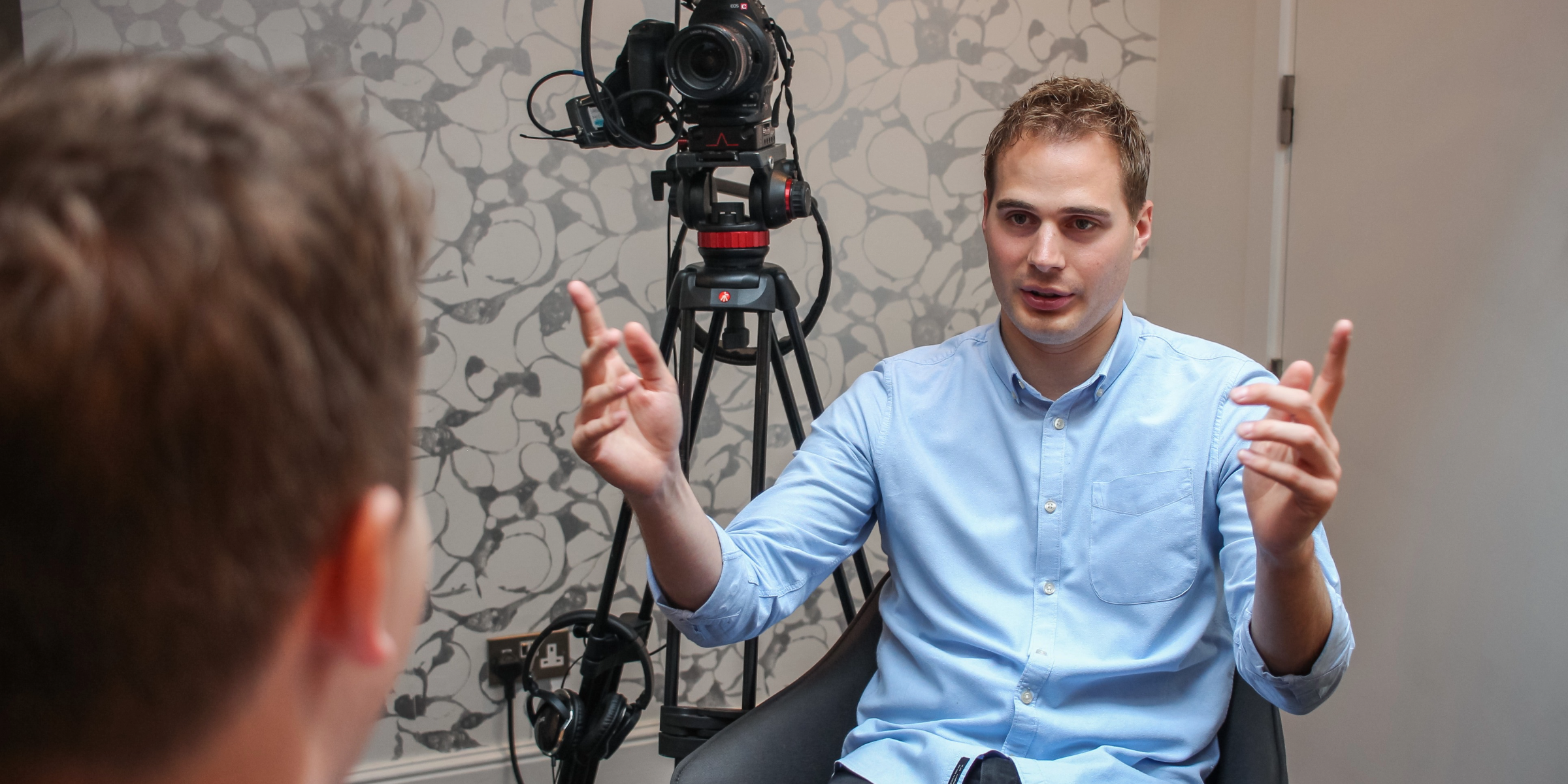A PR Campaign is a set of content and activities, designed and strategically released, to achieve one or more business goals.
How to plan a PR campaign
You are going to need to create a PR plan to execute a successful PR campaign. In essence, a PR campaign plan will identify the goals that you want your campaign to achieve, create the key message and communicate it to the target audience.
In this blog we will go over the necessary steps to create a perfect PR plan, which you can use as inspiration to make your own PR template.
Identify the goal or goals of your campaign
This is the first thing you need to determine, as it will will help you decide which PR strategy is the best for your PR plan.
Some PR experts find the SMART method helpful when work out the goals for their PR plan. You need to think of your PR campaign in the following terms:
Specific: What is the desired outcome?
Measurable: How will we measure success?
Achievable: How will the campaign achieve its goals considering outside influences?
Realistic: Is the goal realistic for the scope of the campaign?
Time-based: How long do we have to meet these goals?

Your campaign can have one or more goals. Here are some examples:
- Launching a new product or service
- Telling the public about company news, such as a high-profile hire or a merger
- Improving a brand’s reputation
- Reaching a larger audience
- Damage control after a crisis
Select your audience
Reaching the right audience is key and will be a decisive factor in the success of your PR campaign. Targeting a certain group gives you a chance to connect and build strong relationships with the people who are genuinely interested in your product or service.
You should start by analysing your customer base. Look at where they live, their age range and gender, the industries they work in, and any defining traits they may have in common. If you are working with a new brand, think about who the ideal customer would be.
For example, if you’re selling a family car, you will want to address parents with a driving licence. And if you have a local business in Manchester, your target will be people in your area, not London or Cornwall.
Brainstorm
Brainstorming is an important part of developing a PR plan. One of the keys to an effective session is including a mix of people from different backgrounds who can bring in a range of perspectives to the table.
Write down all the ideas pitched during the meeting and let them settle for a day or two before re-approaching with anything you may have missed.
As part of this process, you should consider what the message is going to be and how you’ll get it across to your target audience.
Research the market
At this stage in your PR campaign planning, it is also worth carrying out competitive, social media and digital media analysis to determine how your campaign will fit into broader industry trends.
This is also a good opportunity to investigate which stories within your industry the media is interested in.
Choose your platforms and channels
All the work and effort you are putting into your PR plan will go to waste if your message doesn’t reach the intended audience. To get your message to the intended recipients, you have to consider the channels and platforms your audience pay the most attention to.
Will you hold a launch event? Or perhaps you’ll introduce your product on Instagram live? Should you aim to get your story in the national press? Or will you pitch to regional TV?
If your audience is young, you may want to concentrate your efforts on social media. But if you’re targeting the over 50s, traditional media is a much better option. It’s also a good idea to connect your PR plan to the brand’s SEO, social media, and digital marketing strategies in order to increase the reach of your campaign.
Get feedback
Before you launch your campaign, make sure you get some early feedback to allow you to spot mistakes and make any adjustments. Tell trusted influencers and journalists about the campaign so they can give you an honest opinion. This is a key PR campaign planning consideration.
A useful exercise at this stage of your PR plan is to put yourself if your target audience’s shoes and ask:
- What’s important for them?
- How will the campaign make them feel?
- How can you solve their pain points?
Execution
It’s time to launch your campaign but, before you do, make sure you triple check every detail – from typos to data – as this is your last chance to make any changes!
Give your PR campaign enough time to run after launch as there are external factors that can have an impact. For example:
- Big news stories such as terror attacks, natural disasters, and the death of a public figure
- Major sporting events
- Political elections
- Competitor PR campaigns
- Public and religious holidays
Some things are outside of your control, and that’s okay. However, it’s always best if you give yourself some wriggle room to react while making sure you still accomplish your goals.
Follow up
Most journalists and influencers receive tens, if not hundreds, of emails a day and they can easily miss your pitch.
If you don’t get a response within a couple of days of making the initial contact, you should send a follow up to make your campaign stand out. If necessary, be ready to argue your story is worthy of coverage.
Measurement
Once your PR campaign is over, it’s time to measure its success by putting together a report with its KPIs and metrics.
You can make a note of things such as the number of media enquiries, interviews broadcast, and articles published about your PR campaign. You can also look at the engagement on your social media channels and sales numbers. Advertising equivalent, or AVEs, is a method of measurement now discredited by the PR industry.
Debrief
This is the final stage of your PR campaign planning and an opportunity for you to reflect on what went well and what didn’t go so well during your PR campaign.
Ask the members of your team to join you in compiling a list of the things that were successful and the things they would do differently next time. This process will make any future PR plans more effective.
What about a Broadcast PR campaign?
You can still use the same PR plan template if you’re working on a broadcast-only PR campaign. However, there are a few extra things you may want to think about.
Consider adding a third-party spokesperson to your campaign
There is nothing wrong with putting forward somebody internal to be the spokesperson for a campaign. They will find it easy to learn the key messages of the PR campaign and they will already know about the values of the brand. Plus, they will also be able to answer any other questions about their field of expertise that may come up during the interview.
However, adding a third-party spokesperson to the mix will have some benefits. Firstly, they will make the piece seem less advertorial. Radio stations and TV channels operate under strict rules implemented by OFCOM. In practice, this means that they will only consider booking an interview if it makes editorial sense for it to be on the programme.
These rules are even stricter for BBC outlets, as they can’t be seen to advertise a product. Producers are often reluctant to book a PR campaign if the only spokesperson available is too close to the brand. Third-party experts are likely to have taken part in other campaigns before, making them known to and trusted by producers. A well-known name will increase your chances of being booked.
Choosing a celebrity will generate bigger interest and national media will often want to ask a couple of unrelated questions at the end of the interview. This may seem counterproductive at first, but it is very often a price worth paying for the coverage. When selling in an interview to a broadcaster you need to ask yourself: What does this programme get from the interview? If the answer is ‘nothing’, you will have to rethink your pitch.
Selling-in times
Broadcast PR campaigns ideally require seven selling-in days before interviews. This may seem like a long time, but the reality is that every programme works on a unique timeline.
Commercial regional radio is likely to book in early. Some national TV programmes will also book in advance if you’re offering a celebrity or a light-hearted story.
However, most national TV and radio and regional BBC stations will wait until 1-2 days before to book in. This is because their programmes are mostly reactive to the news agenda, which can change very quickly. Occasionally, they cancel or reschedule interviews last-minute to cover a breaking news story instead. This is frustrating but, unfortunately, not unusual and something you need to be prepared for.
Case studies
Case studies are powerful resource if you are pitching a human interest story to regional radio and TV as they will always look for a local angle in their stories. However, national media will also be interested in speaking to them if they are available.
Case studies are not easy for journalists to find and by providing them, you will be increasing your chances of being booked.
B-roll and other assets
B-roll is video footage which is used to illustrate a PR generated story. Its demand has increased since the start of the pandemic due to a frantic news agenda and newsroom cutbacks, meaning that broadcasters don’t have the resources to film their own footage. It’s often an overlooked aspect of PR campaign planning.
B-roll is traditionally a fantastic asset to maximise coverage on TV. However, with radio becoming more and more visual, it is also useful for radio stations which livestream or film their output to later post on social media.
Audio and stills relevant to the story will also maximise the chances of landing a broadcast interview.
How can Shout! Communications help with your PR campaign?
Thanks for reading our guide on how to plan a PR campaign. If you’d like help planning your own campaign, get in touch. The team at Shout! Communications is made of broadcast PR professionals with decades of experience creating and leading broadcast content for radio and TV. And we also think like the broadcast producers we used to be! Having made those decisions in the past, we confidently know what broadcasters want and what they don’t want.
We can provide advice on how to approach broadcasters to get them interested in your campaign, as well as spokesperson media training, and even B-roll production. You can contact us by emailing hello@shoutcommunications.co.uk or calling 020 7240 7373.
Blog written by Marta Malagon Manas, Broadcast Consultant at Shout! Communications






